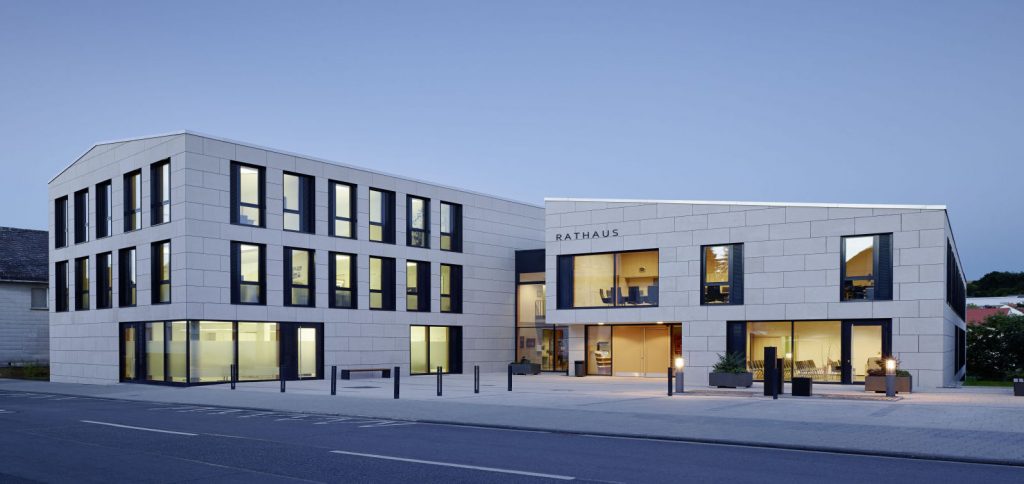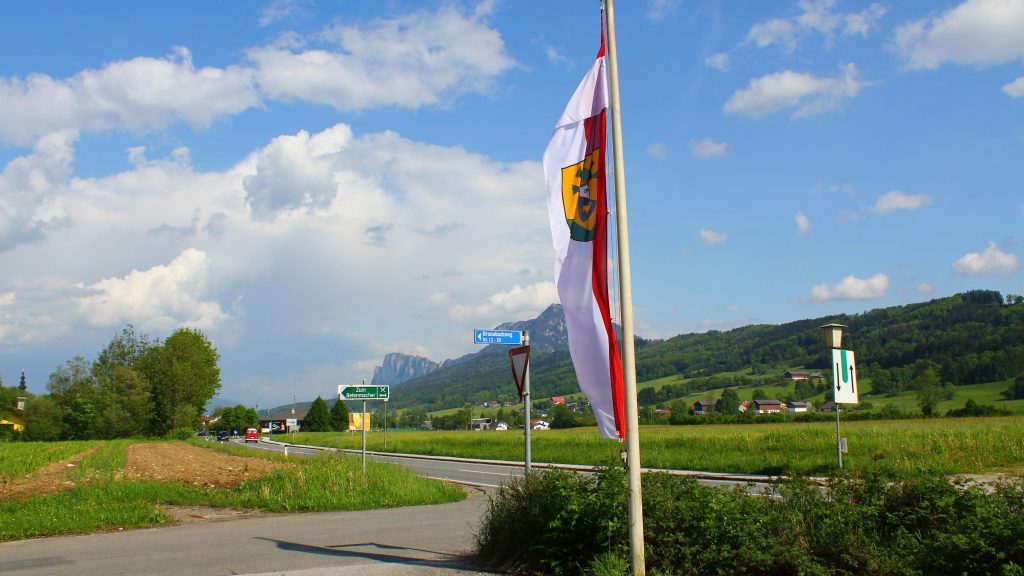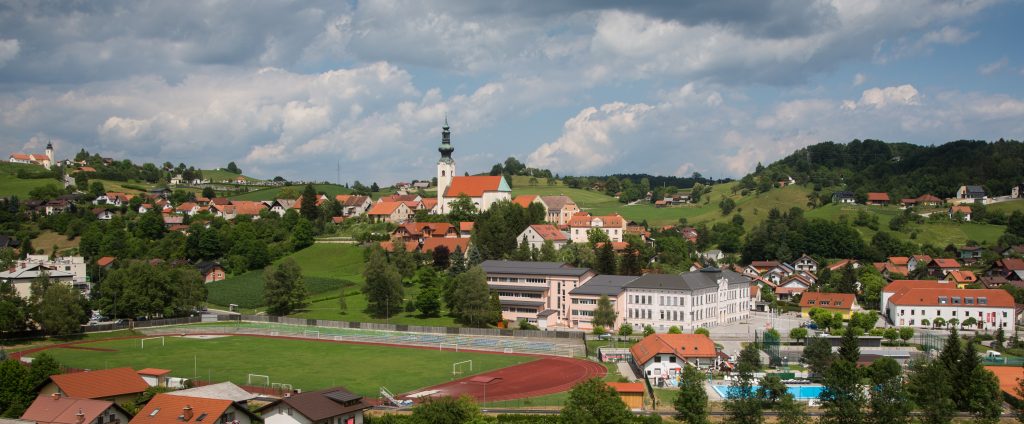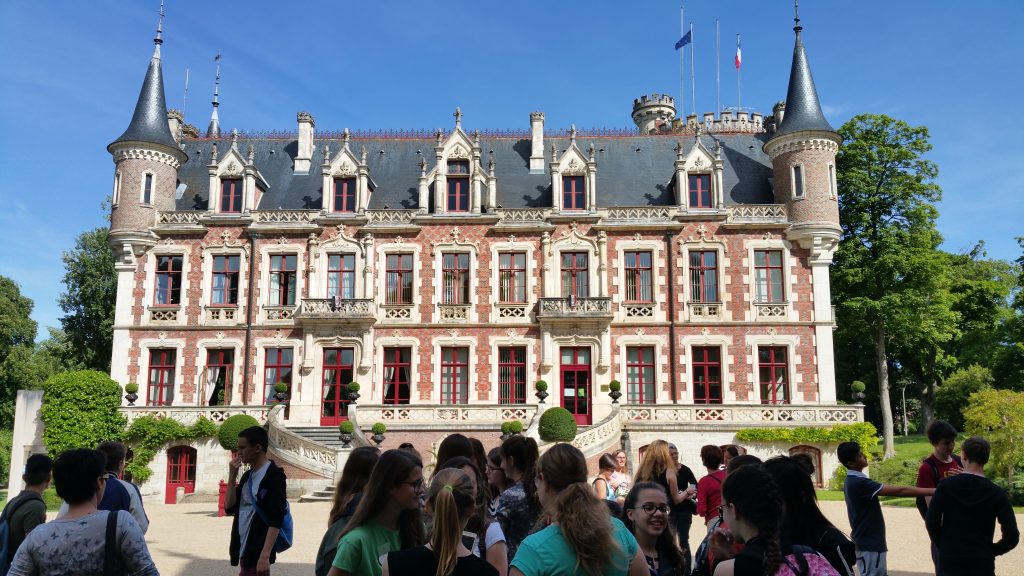Twin towns
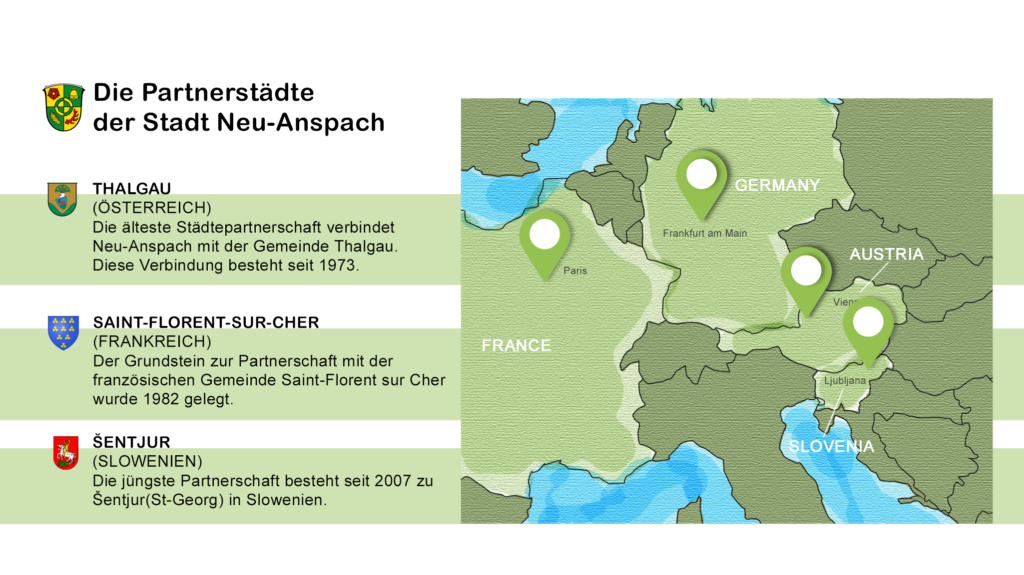
The idea of twinning was born after the Second World War to facilitate reconciliation and international understanding. Through direct encounters, prejudices were to be reduced and mutual trust promoted: People were to come together and exchange ideas in order to overcome – not only geographical – borders in the end. In 1973, Neu-Anspach established its first town twinning with the Austrian municipality of Thalgau.
The German-French twinning was officially sealed in 1982 after an “engagement period” of more than 2 years. It was preceded by numerous civic meetings and youth exchanges organised by associations and, above all, the two schools, the Collège Voltaire and the Adolf Reichwein School.
Both municipalities established a ring partnership with the municipality of Šentjur in 2016 and 2017. All three towns and municipalities have been twinned since then. The citizens meet regularly in civic meetings.
Since 2010, one-week international youth projects have been carried out, which meet the high standards of the ErasmusPlus funding criteria.
